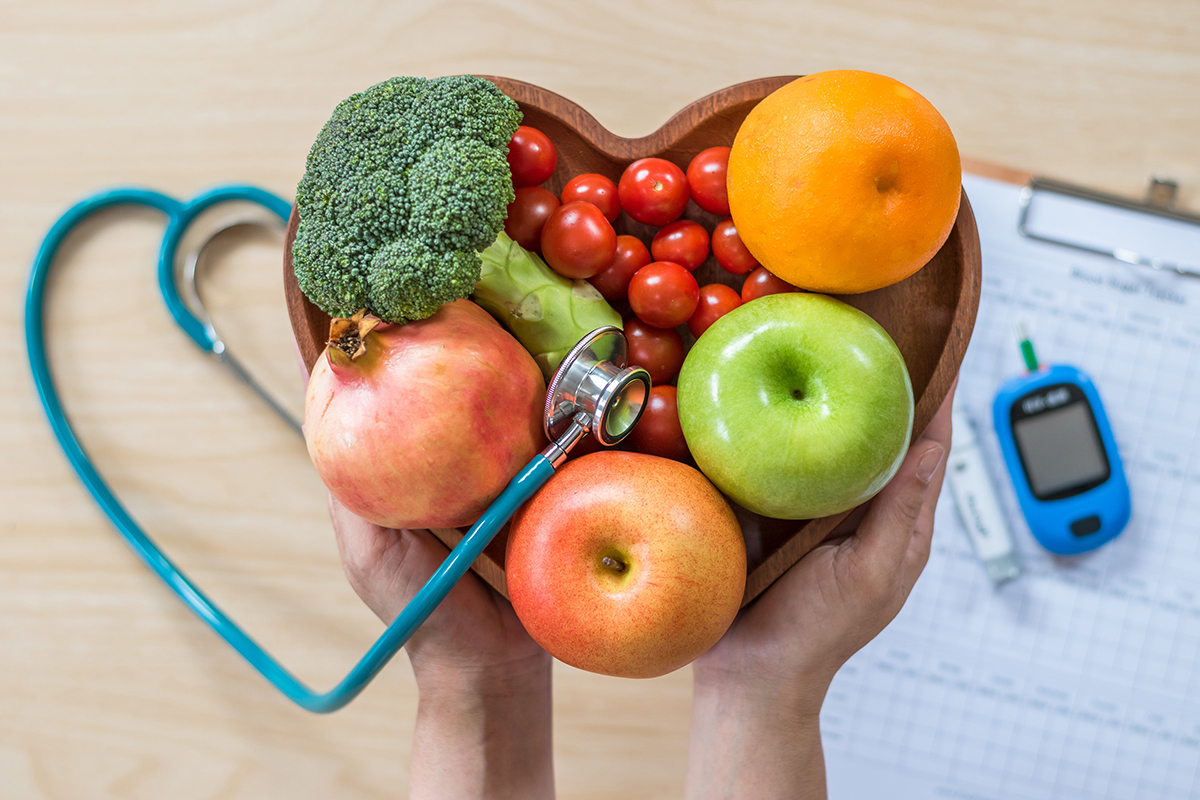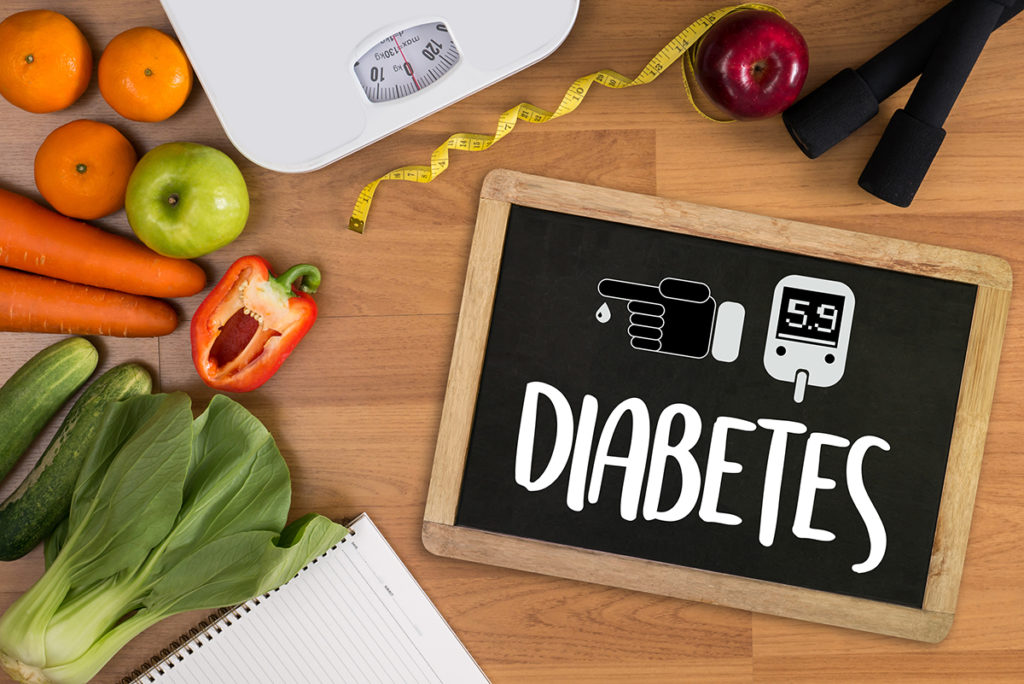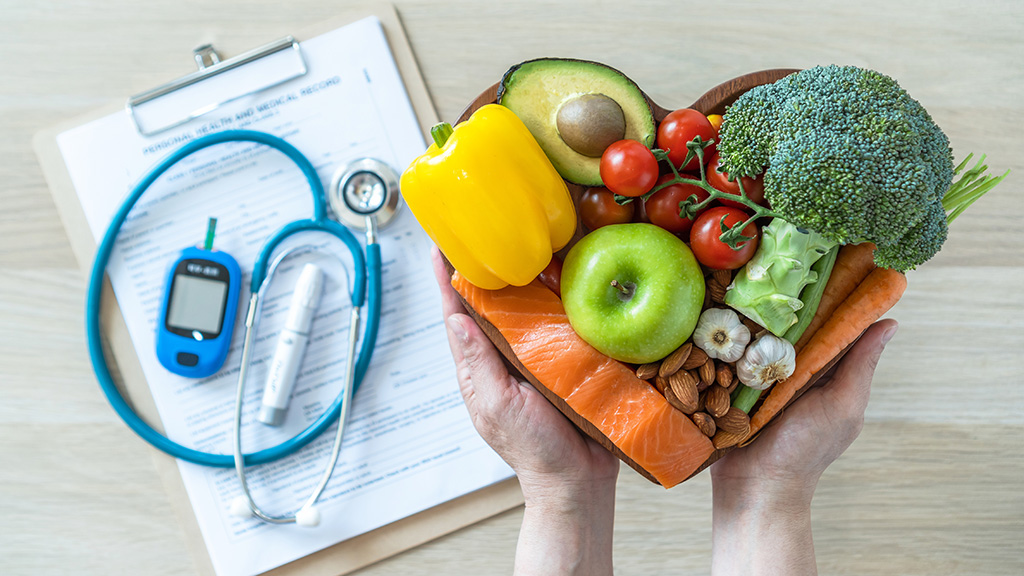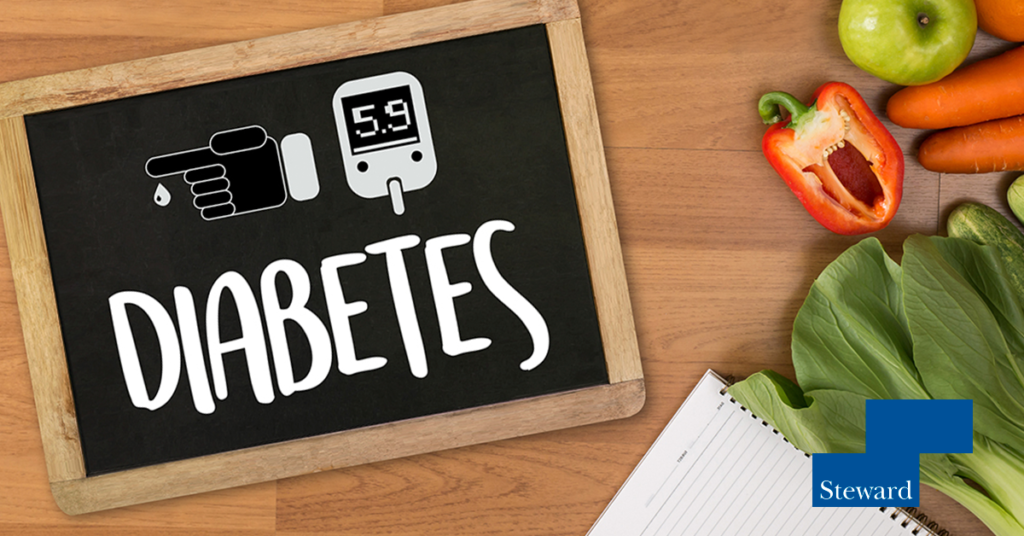Having diabetes can impact your diet, but it doesn’t mean you have to give up all the foods you enjoy. Creating a meal plan with the help of your health care team can be beneficial and fit your needs.
“A meal plan tells you when to eat your meals and snacks, what kinds of foods to eat, and how much of each food to eat,” says Cara Osgood, MPH, RD, a Steward Health Care registered dietitian. “You will be surprised that some of the foods you like will be included in your plan, but you do need to incorporate some of the following guidelines.”
Choose Healthy Carbohydrates
Starches, sugars, and fiber are all types of carbohydrates, and it’s important to keep track of the amount of carbohydrates you eat. This can help you keep the right balance of physical activity and medicine. The number of carbohydrates needed will vary for each person depending on your health, the medicines you take, and your activity level. Your health care team will help you figure out the right amount of carbohydrates for you. You may start with around 45 to 60 grams of carbohydrates per meal, depending on your situation.
Here are some examples of foods containing approximately 15 grams of carbohydrates (1 serving of carbohydrates):
- ½ cup of canned or frozen fruit
- A small piece of fresh fruit (4 ounces)
- 1 slice of bread
- ½ cup of oatmeal
- ⅓ cup of rice
- 4 to 6 crackers
- ½ English muffin
- ½ cup of black beans
- ¼ of a large baked potato (3 ounces)
- ⅔ cup of plain fat-free yogurt
- 1 cup of soup
- ½ cup of casserole
- 6 chicken nuggets
- 2-inch-square brownie or cake without frosting
- 2 small cookies
- ½ cup of ice cream or sherbet
Choose Healthy Foods Containing Protein
Eating protein that is low in fat can help you control your weight. It also helps keep your heart healthy. Low-fat protein foods include:
- Fish
- Plant proteins, such as dry beans and peas, nuts, tofu and soymilk
- Lean meat with all visible fat removed
- Poultry with the skin removed
- Low-fat or nonfat milk, cheese, and yogurt
Limit Unhealthy Fats and Sugar
Saturated and trans fats are unhealthy for your heart. They raise LDL (bad) cholesterol. Fat is also high in calories, so it can make you gain weight. To cut down on unhealthy fats and sugar, limit these foods:
- Butter or margarine
- Palm and palm kernel oils and coconut oil
- Cream
- Cheese
- Bacon
- Lunch meats
- Ice cream
- Sweet bakery goods such as pies, muffins, and donuts
- Jams and jellies
- Candy bars
- Regular sodas
Watch Portion Sizes
Portion sizes are important to controlling your blood sugar and staying at a healthy weight. Your health care team will tell you how much of each type of food you should eat.
To help with portion control:
- Use measuring cups and spoons and a food scale to measure serving sizes.
- Learn what a correct serving size looks like on your plate. This will help when you are away from home and can’t measure your servings.
- Eat only the number of servings given on your meal plan for each food. Don’t take seconds.
- Learn to read food labels. Be sure to look at serving size, total carbohydrates, fiber, calories, sugar, and saturated and trans fats. Look for healthier alternatives to foods that have added sugar.
- Plan for parties so you can still have a good time without going overboard with unhealthy food choices. Set a good example yourself by bringing a healthy dish to potlucks.
Snack Smartly
When it comes to snacks, we are usually drawn to foods with added sugar and fats. But there are many other options for healthier snack choices. Here are a few snack ideas to choose from:
Snacks with less than 5 grams of carbohydrates include:
- 1 piece of string cheese
- 3 celery sticks plus 1 tablespoon of peanut butter
- 5 cherry tomatoes plus 1 tablespoon of ranch dressing
- 1 hard-boiled egg
- ¼ cup of fresh blueberries
- 5 baby carrots
- 1 cup of light popcorn
- ½ cup of sugar-free gelatin
- 15 almonds
Snacks with about 10 to 20 grams of carbohydrates are:
- ⅓ cup of hummus plus 1 cup of fresh cut nonstarchy vegetables (carrots, green peppers, broccoli, celery, or a combination)
- ½ cup of fresh or canned fruit plus 1/4 cup of cottage cheese
- ½ cup of tuna salad with 4 crackers
- 2 rice cakes and a tablespoon of peanut butter
- 1 small apple or orange
- 3 cups light popcorn
- ½ of a turkey sandwich (1 slice of whole-wheat bread, 2 ounces of turkey, and mustard)
Timing Meals is Key to Keeping Blood Sugar in Check
Your meal plan will likely include breakfast, lunch, dinner, and some snacks. It is important to try to eat your meals and snacks at about the same times each day. Also, eat all your meals and snacks. Skipping a meal or snack can make your blood sugar drop too low. It can also cause you to eat too much at the next meal or snack, which may make your blood sugar get too high.
If you are interested in working with a registered dietitian to create a meal plan that is right for you, please schedule an appointment with your doctor or health care team.
To find a doctor or schedule an appointment, visit Steward DoctorFinder™.




